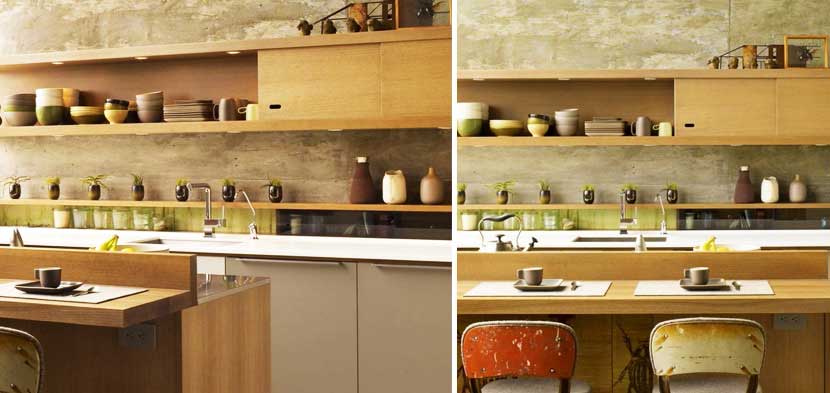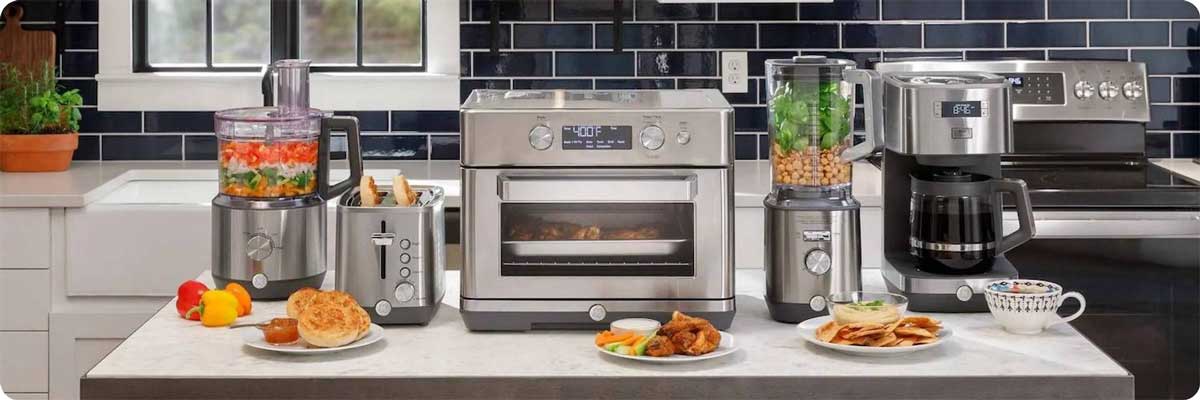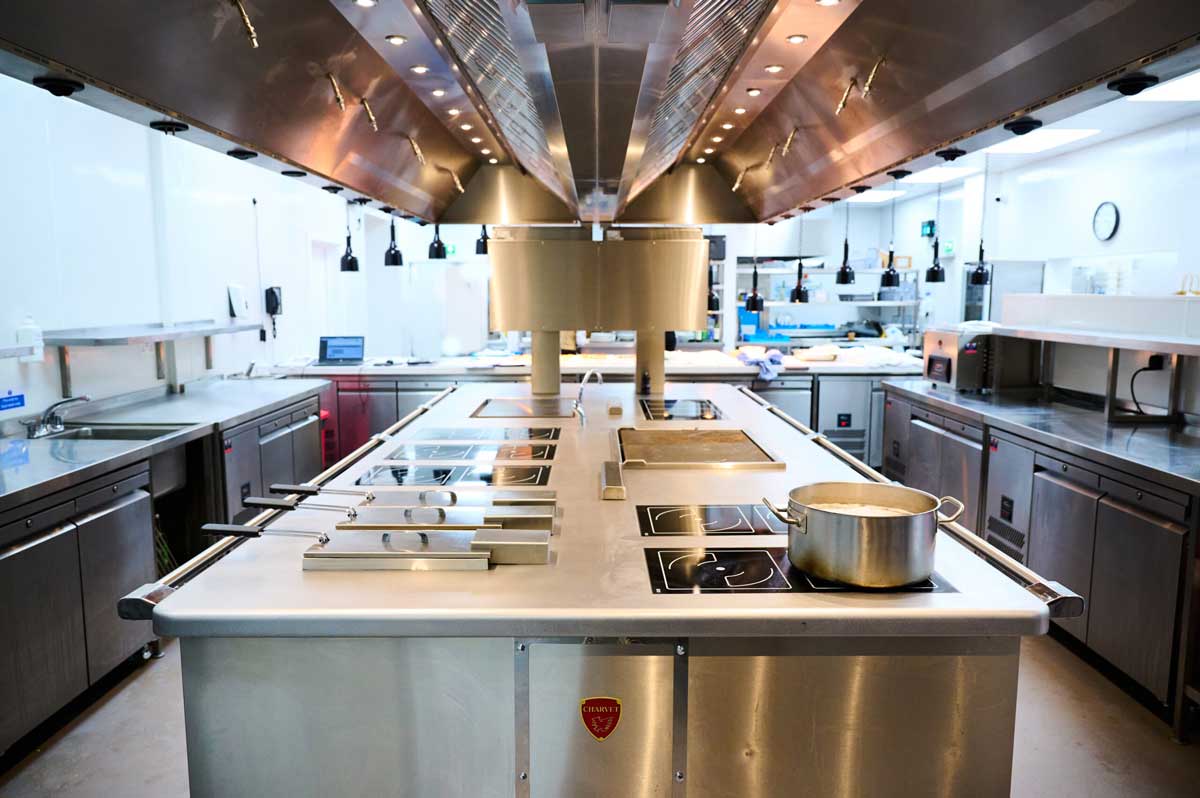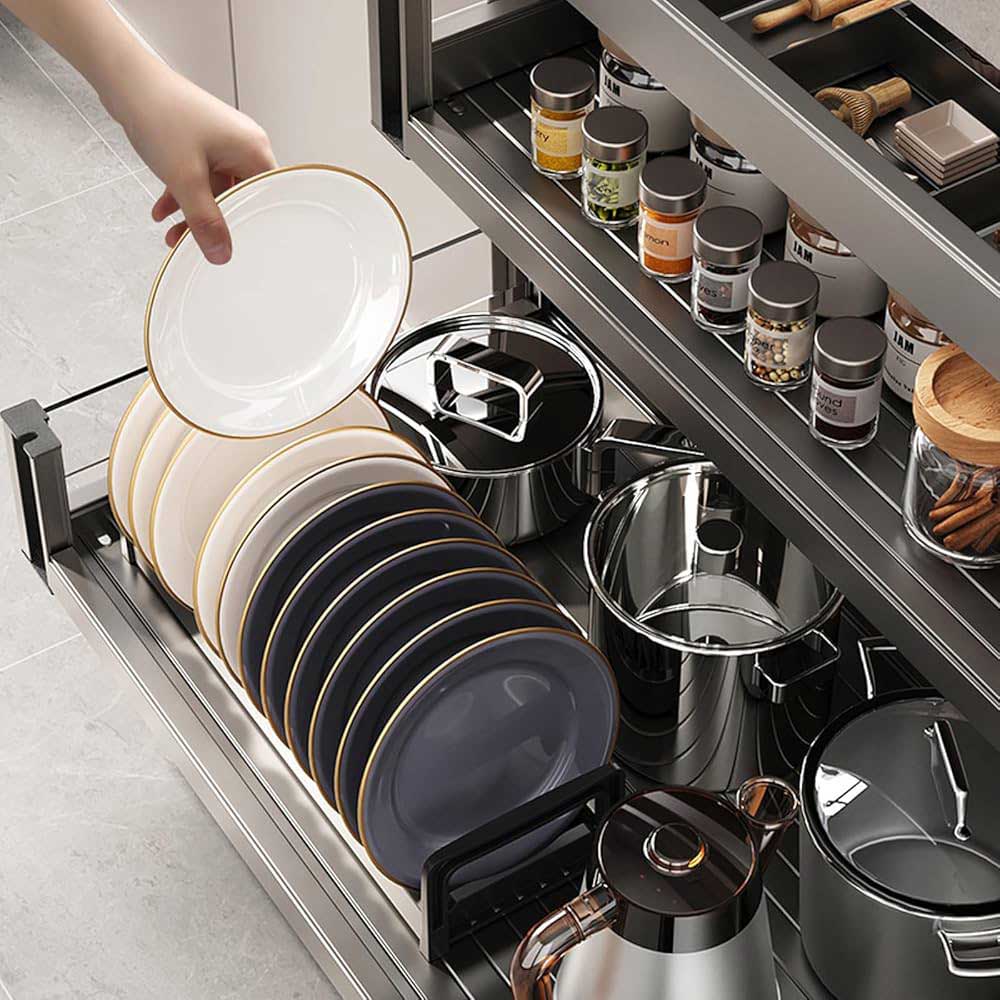Kitchen Reinvented: The 2025 Blueprint for a Modern Culinary Sanctuary
The Emotional and Functional Evolution of the Kitchen
Introduction: Rediscovering the Kitchen’s Soul in 2025
Kitchens used to be just functional spaces. A place to chop, boil, bake, and then leave. However, that outdated perception has been completely reversed in 2025. Kitchens are now more than just functional spaces; they are the center of the house. They serve as creative studios, gathering places, and the perfect nexus of tradition and technology. You’re not alone if you feel that your kitchen no longer accurately represents how you interact with others, live, and feed your loved ones. Everything is changing, and it’s amazing.
What, then, constitutes a modern kitchen in 2025? It’s not just the newest appliances or stainless steel. It’s the way a place makes you feel—inspired, safe, and connected. Every aspect of reinvention—emotional, aesthetic, technological, functional, and sustainable—will be covered in this article. This is your blueprint for everything from lighting to layout, from smart refrigerators to heartfelt moments over a midnight snack.
Section 1: The Heartbeat of the Home — Emotional Roles of the Kitchen in 2025
The kitchen has become a haven in a post-pandemic world where digital fatigue and remote work coexist. People can disconnect from screens, re-establish a connection with real textures, and share in real time there.
- The Kitchen as a Comfort Zone: More homeowners are prioritizing mood-enhancing lighting, soft textures, and natural colors. Think warm oak cabinetry, matte terracotta tiles, and curved islands that invite rather than separate.
- From Functional to Emotional Spaces: Cooking today is often therapeutic. It’s no longer about rushing meals—it’s about slowing down. You see more homes with custom spice drawers, integrated indoor herb gardens, and cozy breakfast nooks.
- Design for Togetherness: Open-concept kitchens aren’t new, but the difference in 2025 is how they integrate emotion. Banquette seating, circular islands, and modular cooking stations allow couples, families, and even roommates to interact without the kitchen feeling like a performance stage.
Case Study: In a recent Houzz report (2025), 63% of homeowners said their kitchen was the most emotionally significant room in their home, outranking even the living room.
Section 2: Layouts That Work Smarter and Feel Better
Designing a kitchen layout in 2025 requires a fusion of ergonomic intelligence and aesthetic empathy.
- Zones Instead of Work Triangles: Forget the outdated “sink-stove-fridge” triangle. We now think in zones: prep zone, cooking zone, social zone, hydration station, etc.
- Multi-Use Islands: Islands have become multi-functional tables—meal prep by day, Zoom meetings at noon, wine and board games by night.
- Vertical Thinking: With space at a premium, more homeowners are embracing vertical design—wall-mounted shelving, magnetic knife strips, ceiling-hung pot racks, and smart storage towers.
Pro Tip: According to Kitchen & Bath Business (2025), vertical storage solutions can increase usable space by up to 25% in small kitchens.

no-cabinet-handles-and-sliding-screens-in-japanese-kitchen-design
Section 3: Tech That’s Actually Helpful (Not Just Gimmicky)
A smart kitchen doesn’t mean you need an app for every spoon and spatula. In 2025, it’s all about balance: technology that enhances your experience, not overwhelms it.
- Voice-Activated Everything: From faucets to ovens to inventory systems. You can now say, “Preheat oven to 375” while chopping your veggies—and the oven obeys.
- AI Meal Planning: Connected fridges track your groceries, suggest recipes, and help reduce food waste by alerting you when things are close to expiration.
- Smart Appliances with Soul: The best innovations blend in. Think matte-black induction cooktops that auto-adjust heat zones, or coffee machines that personalize your morning brew.
Stat Box:
| Tech Feature | % Adoption in U.S. Homes (2025) |
|---|---|
| Smart Fridge | 47% |
| Voice-Controlled Faucet | 38% |
| AI-Powered Oven | 29% |
Section 4: Materials, Textures, and Aesthetic Movements of 2025
The kitchen aesthetic is shifting towards soulful minimalism. That means spaces that are clutter-free, yet rich in character.
- Natural Meets Industrial: Picture oak cabinetry with brushed copper handles, paired with honed concrete countertops.
- Tactile Surfaces: Textures are huge in 2025. Think fluted wood panels, recycled glass tiles, and eco-friendly stone surfaces with hand-chiseled edges.
- Color Trends: While white still reigns supreme, deep greens, smoky blues, and clay tones are emerging as go-to accents.
Expert Quote: “Texture is the new color,” says interior designer Isla Morgan. “People want surfaces they can feel, not just see.”
Section 5: Sustainability Is No Longer Optional
In 2025, a modern kitchen is a green kitchen. Homeowners are increasingly committed to low-waste, energy-efficient living.
- Eco-Appliances: Look for Energy Star Most Efficient labels. Induction cooktops, eco-dishwashers, and ultra-low-flow faucets are top picks.
- Sustainable Surfaces: Bamboo, recycled aluminum, and even mushroom mycelium panels are finding their way into eco-forward designs.
- Smart Waste Management: Under-counter composters and AI-enabled trash bins that sort recyclables are no longer futuristic—they’re standard.
Table: Kitchen Sustainability Features in 2025
| Feature | % Home Adoption (2025) |
| Induction Cooktops | 56% |
| Built-In Composting Systems | 34% |
| Water Filtration & Reuse Tech | 22% |

electric-kitchen-appliances
Materials, Technologies, and Social Shifts Reshaping the Heart of the Home
The Rise of Sustainable and Smart Materials
The days of a modern kitchen consisting solely of stainless-steel appliances and granite countertops are long gone. By 2025, the emphasis has drastically changed to materials that are smart, sustainable, and sourced ethically. Nowadays, homeowners are searching for kitchen components that reduce their negative effects on the environment without sacrificing durability or style.
1. Eco-Conscious Countertops and Cabinetry
The market is dominated by materials that offer durability, character, and a backstory, such as reclaimed wood, bamboo, and recycled glass. Leading manufacturers of surfaces composed of recycled paper composites and sustainable resins include Cosentino and Richlite.
Once thought of as rustic or niche, reclaimed wood cabinetry is now being used in modern settings to add coziness and lessen carbon emissions. These materials are healthy and environmentally friendly because they frequently have low-VOC finishes and FSC certification.
2. Seamless Surfaces and Touch-Free Innovation
Sensor-driven cabinets, voice-activated lighting, and touchless faucets are not futuristic anymore. They are necessities of the modern world. A trend that was sped up by pandemic awareness and is now commonplace is homeowners’ desire for smooth interactions where functionality and hygiene meet.
Surfaces like Dekton and Corian offer not only heat and scratch resistance but also antimicrobial properties — making them highly desirable in modern homes focused on wellness.
3. Smart Appliances Built for Sustainability
Better energy use, food management, and meal automation have been made possible by the rise of appliances with embedded AI. These days, refrigerators keep track of expiration dates. Ovens are able to identify their contents and suggest settings. Dishwashers adjust water consumption according to dirt level and load weight.
Large companies like LG, Samsung, and Bosch are providing whole ecosystems that connect through the Internet of Things in order to control energy consumption, identify issues early, and contribute to waste reduction. By 2025, smart kitchens will be more than just networked; they will be aware.
The Evolution of Dining Culture at Home
Dining areas are evolving alongside kitchen design, creating a fluid, multi-functional environment where food, socialization, work, and wellness converge.
1. The “Kitchen Lounge” Concept
The strict divisions between prep and dining areas are no longer in place. The “kitchen lounge,” an airy, open area with soft seating, layered lighting, and hybrid tables that facilitate both meetings and meals, is expected to become popular in 2025.
A comfortable yet practical ambiance that reflects how we live today—multitasking, unwinding, and entertaining all in one place—is created by soft textures, banquette seating, and built-in speakers.
2. Dining Tables as Tech Hubs
By 2025, meals are no longer the only activities that take place at the dining table. People are taking notice of tables that have integrated induction cooking zones, wireless charging stations, and even touch screens. Even the height of some sophisticated models can be changed to transform them from dining areas to standing workstations.
For small homes or city apartments where every square foot counts, this multipurpose strategy is ideal.
3. Return of the Communal Experience
In 2025, communal, in-person dining is experiencing a renaissance after years of virtual dinners and physical distance. Larger, movable tables, built-in wine cellars, and open-concept kitchens that let the host cook and socialize at the same time are all features of new home designs.
This social change is even being reflected in appliance design, as hosts and foodies are increasingly favoring multi-zone ovens and wine preservation systems.

lesbian-couple-together-indoors-concept-lesbian-in-the-kitchen-young-women-are-in-a-mutual-lesbian-love-relationship-lgbt-concept-photo
Table: Comparison of Smart Kitchen Features (2020 vs. 2025)
| Feature | Common in 2020 | Standard in 2025 |
|---|---|---|
| Touchless Faucets | Luxury | Standard in mid-range homes |
| Voice-Controlled Ovens | Niche | Widely adopted |
| Smart Refrigerators | Limited use | IoT-integrated + expiration tracking |
| AI-Driven Cooking Assistants | Prototype phase | Common with recipe databases |
| Energy Usage Monitoring | External apps required | Built-in + automated reports |
Color, Texture, and Psychological Impact
These days, kitchens and dining rooms are made with mental health in mind in addition to functionality. Color palettes are dominated by earth tones, creamy whites, muted greens, and gentle blues. Research supports these choices by demonstrating that these colors foster a sense of calm and nourishment while lowering anxiety.
Warm, human-centered design is replacing overly clinical kitchens, and rounded hardware, matte finishes, and textured backsplashes soften the look.
With layered setups that provide task, accent, and ambient modes that adjust to different moods and times of day, lighting also plays a crucial role.
What This Means for Homeowners and Designers
Not only is the boundary between the kitchen and the living area becoming less distinct, it is also vanishing. Nowadays, every element—from the countertop to the ambient lighting system—combines functionality, sustainability, wellness, and technology.
In 2025, kitchens and dining areas are essential to a home’s identity and serve more purposes than simply cooking and eating. They serve as a canvas for responsible design, digital living, and human connection.

Mastering Kitchen Design: Space, Style, and Smart Appliances for Your Home
The Future of Kitchen Storage & Sustainability in 2025
The Smart Storage Revolution: Cabinets With Brains
Pots are no longer stacked haphazardly or spices are crammed into drawers for storage. Kitchen cabinetry is a complete technological marvel in 2025. We are referring to Internet of Things (IoT)-enabled storage systems that have the ability to identify inventory, recommend shopping lists, and connect to your preferred meal planning applications.
-
Voice-activated pantry access
-
Automated pull-out shelves
-
RFID tagging of ingredients
-
Climate-controlled drawers
Why it matters: These smart upgrades reduce food waste, save money, and even suggest recipes based on what’s inside your cupboards.
➡️ Backlink: Learn how IKEA is integrating tech into its kitchen lines in this article by Dezeen.
Sustainability as the Soul of Kitchen Design
Homeowners in 2025 aren’t just looking for a pretty backsplash — they want kitchens that work with the planet. This is where eco-conscious design leads the charge:
| Sustainable Element | Description |
|---|---|
| Recycled countertops | Made from glass, bamboo, or composite stone |
| Water-saving dishwashers | Reduce usage by 40–60% using AI-controlled cycles |
| Solar-powered appliances | Especially in off-grid homes |
| Induction cooking technology | More efficient and safer than gas |
| Zero-VOC paints and finishes | Better for air quality and respiratory health |
People aren’t just asking what’s new, but what’s clean, green, and regenerative.
Kitchen + Dining Room = One Seamless Experience
Gone are the days when the kitchen was tucked away behind a wall. Open-concept living reigns, and 2025 takes it to the next level:
-
Multi-functional kitchen islands that double as dining tables, charging stations, or cocktail bars
-
Hidden appliances that disappear into cabinetry for a seamless look
-
Ambient lighting that adapts to the time of day or dinner mood
-
Retractable partitions to create flexible boundaries between cook and host areas
This shift isn’t just about aesthetics — it’s about redefining the kitchen as the heartbeat of the home.
Cultural Curation: Kitchens Inspired by Global Traditions
One of the most fascinating trends of 2025 is cultural infusion in kitchen aesthetics. Homeowners are increasingly curating their spaces to reflect personal or global heritage:
-
Japandi minimalism (Japanese + Scandinavian)
-
Moroccan tile accents
-
Italian terrazzo floors
-
Mexican Talavera splashbacks
-
Indian brass hardware
This is more than decoration. It’s a storytelling experience. Your kitchen becomes an extension of who you are, where you’ve been, or what you dream of cooking.

loving-vietnamese-couple-cooking-together-in-the-kitchen-at-home
Voice, Vision & AI: The Real Kitchen Assistants
No more shouting “Siri, set a timer!” — 2025 kitchen AI systems recognize tone, gesture, and even mood.
-
Ask your kitchen to suggest a dish based on your stress level
-
Let your oven recommend the best baking tray based on the food type
-
Use voice gestures to turn on under-cabinet lighting while your hands are wet
➡️ Backlink: Discover the integration of generative AI in modern kitchens in MIT Technology Review’s 2025 report.
Table: Essential Smart Kitchen Gadgets in 2025
| Device | Function | Why It’s a Must-Have |
|---|---|---|
| Smart Fridge with Food Scanner | Tracks food shelf life, suggests recipes | Reduces waste, simplifies planning |
| AI Meal Planner | Integrates with wearable health data | Custom meal suggestions based on your diet & goals |
| Modular Induction Cooktop | Portable, flexible, app-controlled | Perfect for small or evolving spaces |
| Smart Faucet | Voice or touch-free, precise measurements | Eco-friendly and convenient |
| Countertop Indoor Gardens | Grow herbs year-round with smart lighting & watering | Fresh ingredients on demand |
What, Where, Why, When, How — Deep User-Centered Answers
What is the primary force behind the evolution of kitchens in 2025?
the meeting point of lifestyle and technology. In addition to functionality, homeowners now expect seamless automation, sustainability, and personalization.
Where are the innovations occurring at the fastest rate?
While San Francisco, Tokyo, and Amsterdam are hotspots, modular technology is spreading throughout the world.
Why should you make the upgrade in 2025?
Because cooking is no longer the only use for your kitchen. It’s for wellbeing, self-expression, and connection. Investing now increases home value and convenience.
What time of year is ideal for redesigning?
whenever your layout or appliances no longer suit your way of life. Additionally, 2025 technology is sufficiently modular to scale over time.
How can you afford it?
There are affordable innovations through companies like Samsung, GE Profile, and even IKEA, offering bundles, smart integration kits, and financing options.

Ultimate Kitchen Tools Guide 2025
List of upgrades that give the best ROI:
-
Induction cooktops
-
Smart refrigerators
-
Voice-enabled faucets
-
Eco-dishwashers
-
Modular cabinetry
Before remodeling, who should you consult?
Certified electricians for IoT integrations, green builders, and interior designers with experience with smart home systems.
Planning advice: Prioritize your needs, establish a spending limit, envision your style, and make long-term technology investments. Remember the synergy of the floor plan, appropriate ventilation, and lighting design.
FAQs – Kitchen & Dining in 2025
Q1: Are smart kitchens truly worth the money?
Yes. By saving energy, cutting waste, and improving workflow, the majority of smart upgrades pay for themselves in three to five years.
Q2: Is it possible to install smart technology in my existing kitchen?
Indeed. Modernization is possible without a complete remodel thanks to modular appliances and plug-in gadgets.
Q3: Which kitchen trend is most likely to be popular by the end of 2025?
The trend is expected to be biophilic design, which includes organic flow, living plants, and natural textures.
Q4: How can I also make my dining area smarter?
Incorporate mood-based ambiance systems, voice-activated music, extendable smart tables, and lighting scenes.
Conclusion: Where Style, Innovation & Conscious Living Meet
In 2025, the kitchen is more than just a space; it’s a representation of your principles, routines, and pleasures. It is a haven of comfort and culture, a showcase for innovation, and a center for sustainability.
Your kitchen and dining area can now serve you, inspire you, and develop with you, whether you’re making AI-recommended coffee or preparing dinner with a global flair.
Thus, it is true that smart kitchens are not the way of the future.
Now that they’re here, it’s time to create something amazing.


